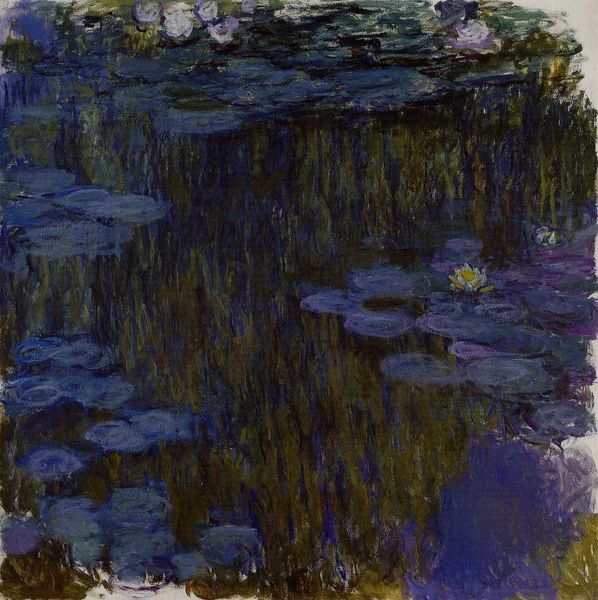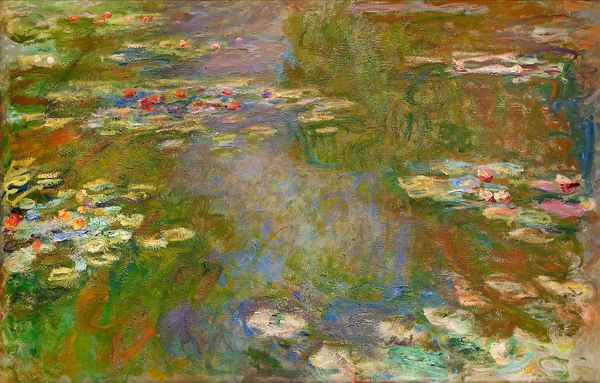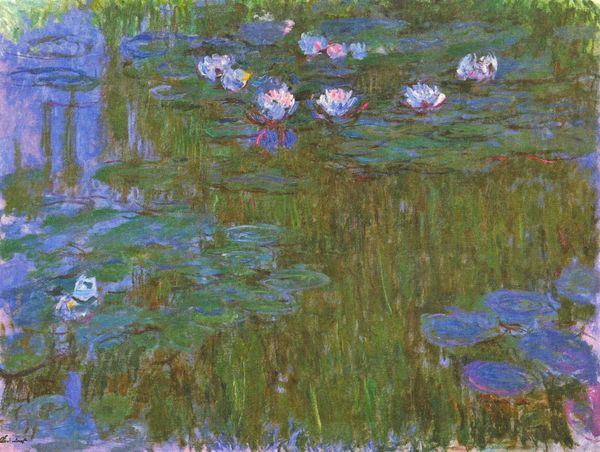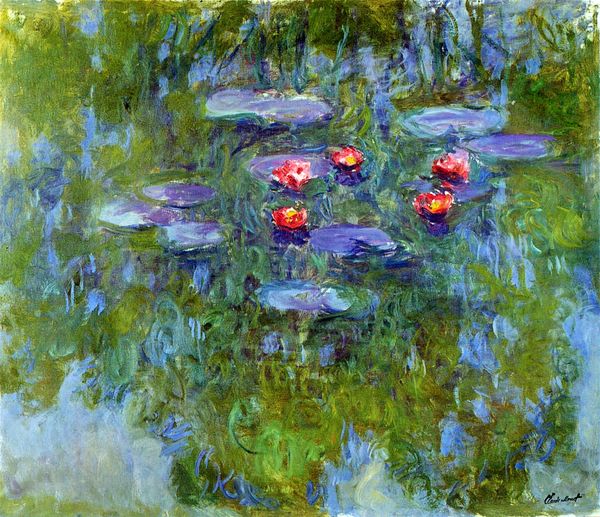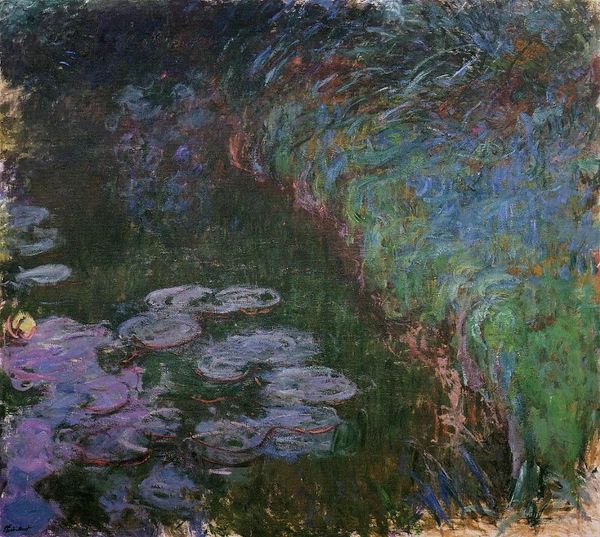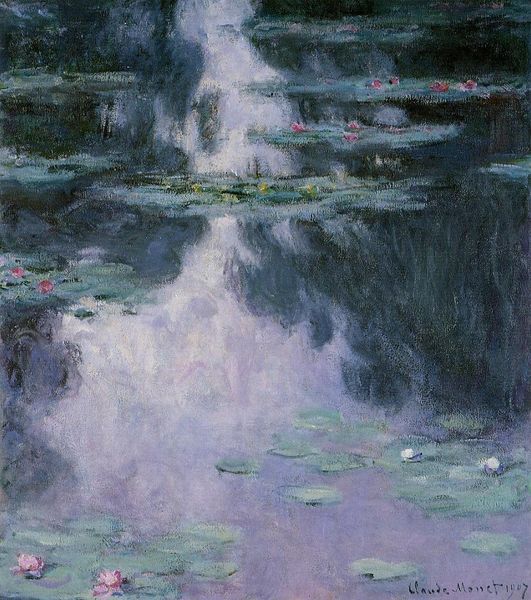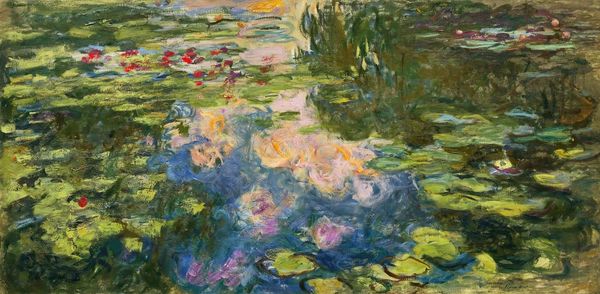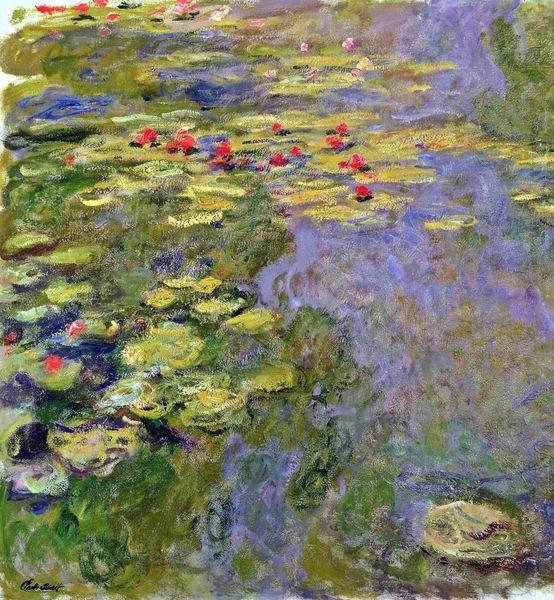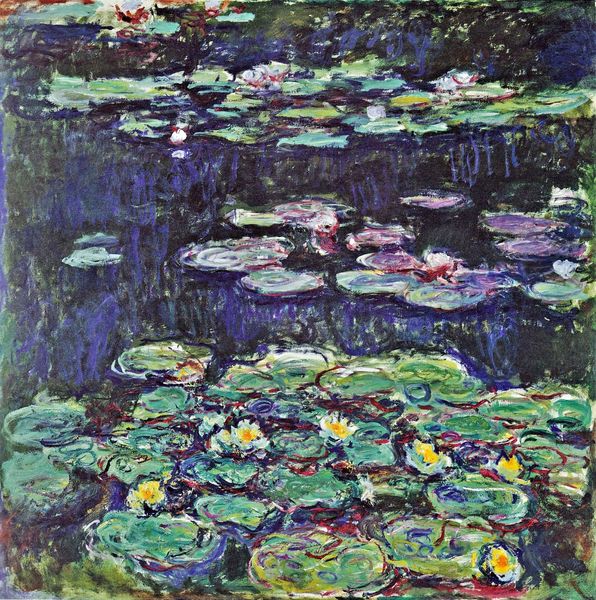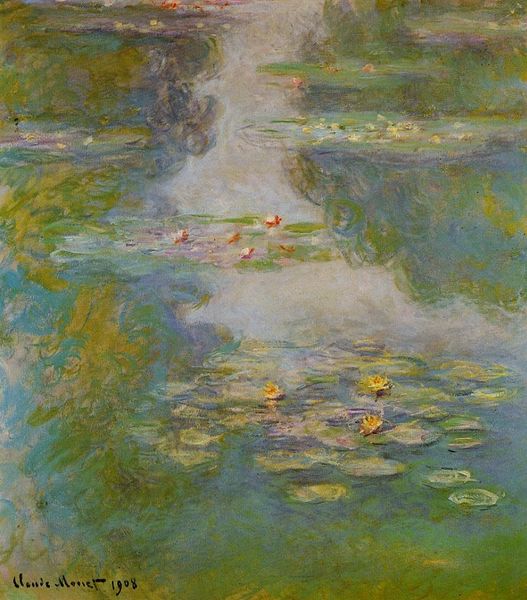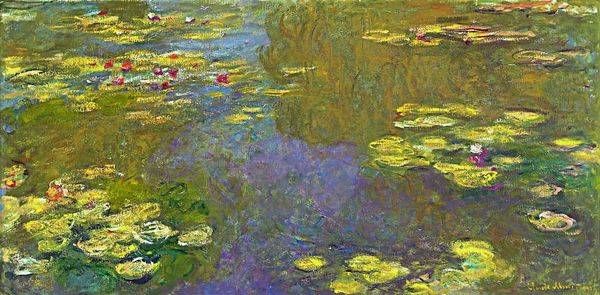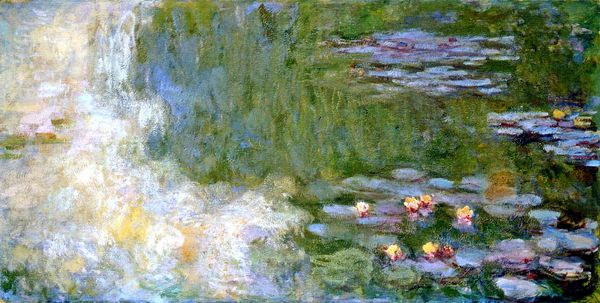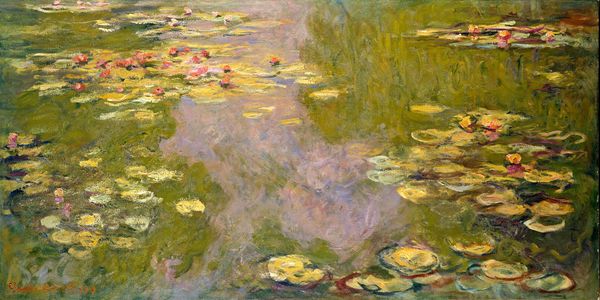
Copyright: Public domain
Claude Monet made this oil painting of water lilies and weeping willows in France. Monet's paintings are often viewed simply in terms of their aesthetic beauty or as examples of a break from academic tradition. But how might we view the works in relation to the politics of imagery and the social conditions that shaped their production? The Impressionists broke from traditional painting and academic convention to create a new visual language. This new language, though, was still shaped by the culture in which it was produced. What part did the art market play in shaping this kind of art? What was the role of critics in either promoting or suppressing artistic innovation? How did new exhibition spaces—outside the official Salon system—help artists find a public for their work? As historians, we might look at exhibition reviews, artists' correspondence, and sales records, in order to better understand the place of these images in French society at the turn of the century.
Comments
No comments
Be the first to comment and join the conversation on the ultimate creative platform.
